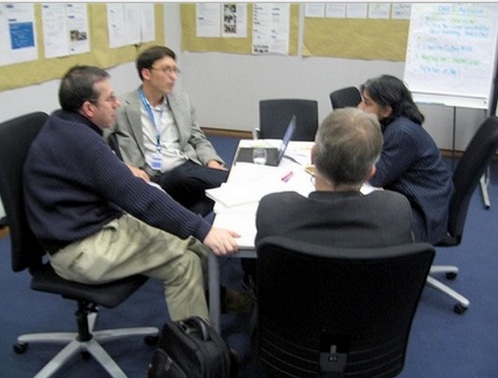
This is the second of 10 Lessons from a Post-Pandemic World. For the other nine, click here.
“The main lesson is we need to increase support for Instructors in all forms of teaching: face-to-face, blended and online.”
When institutions had to switch to emergency online learning in Spring 2020, most instructors were totally unprepared. However, especially following the immediate and short-term implementation of emergency online learning in Spring 2020, there was a tremendous response from both instructors and staff in centres for teaching and learning.
Many instructors sought and found help in how to teach online, not only from their centres for teaching and learning, but also from online sources such as teachonline.ca.
My blog post, Advice to those about to teach online because of the coronavirus, received more than 55,000 hits, mostly in March 2020, far more than any of my other posts over the past 10 years.
Contact North | Contact Nord’s webinar series providing training to faculty also experienced record attendance.
The support from centres for teaching and learning focused on three issues in particular:
- Online course design
- Alternative approaches to teaching other than the lecture method (with an emphasis on active online learning)
- Training in the use of key tools, such as learning management systems, and videoconferencing technologies such as Zoom
Many instructors were imaginative in thinking of new ways to engage students online (see Lesson 4 for examples).
Increased support essential
The main lesson is we need to increase support for instructors in all forms of teaching: face-to-face, blended and online. This means more support staff in centres for teaching and learning: not only expert course designers, but also media specialists with a particular emphasis on student engagement.
However, there is a scaling issue.
Previously, centres for teaching and learning could cope with directly supporting about 10 per cent of all instructors in a year, often on a one-on-one basis. If, as I believe, all courses in the future will be either blended or fully online, alternative strategies for teaching support are needed to support all instructors all the time.
To provide this support, we need to:
- Build online resources related to teaching online that instructors can access as needed, such as how to make a good educational video
- Offer short courses on blended or online course design that are themselves blended or online
- Develop and share open educational resources for faculty development and training to achieve economies of scale across the system
- Invite students to provide help and feedback, such as technical support in video or games design and production
One of the benefits will be that instructors are not only more skillful in teaching, but there will be greater institutional resilience to deal with external shocks such as pandemics.
For Lesson 3, click here: We know how to do quality online and blended learning, but we can also learn from emergency online learning.









 Dr. Tony Bates is the author of eleven books in the field of online learning and distance education. He has provided consulting services specializing in training in the planning and management of online learning and distance education, working with over 40 organizations in 25 countries. Tony is a Research Associate with Contact North | Contact Nord, Ontario’s Distance Education & Training Network.
Dr. Tony Bates is the author of eleven books in the field of online learning and distance education. He has provided consulting services specializing in training in the planning and management of online learning and distance education, working with over 40 organizations in 25 countries. Tony is a Research Associate with Contact North | Contact Nord, Ontario’s Distance Education & Training Network.

